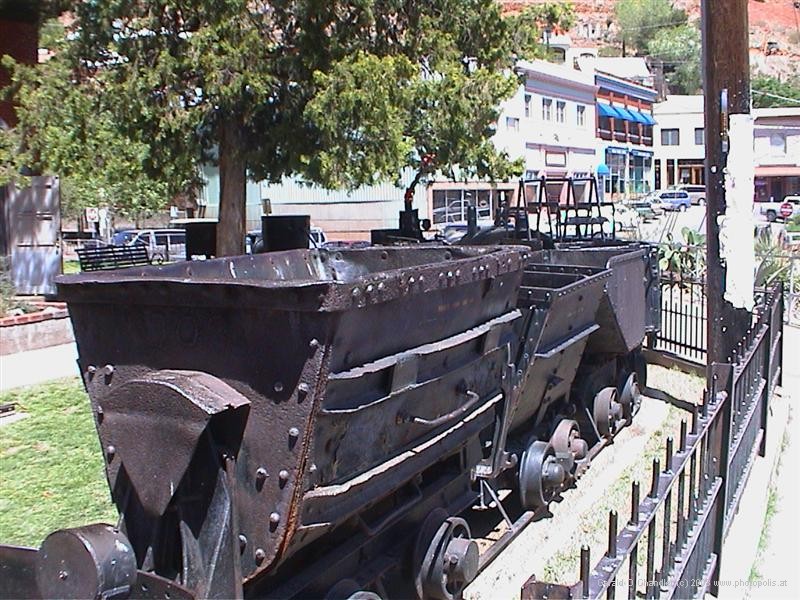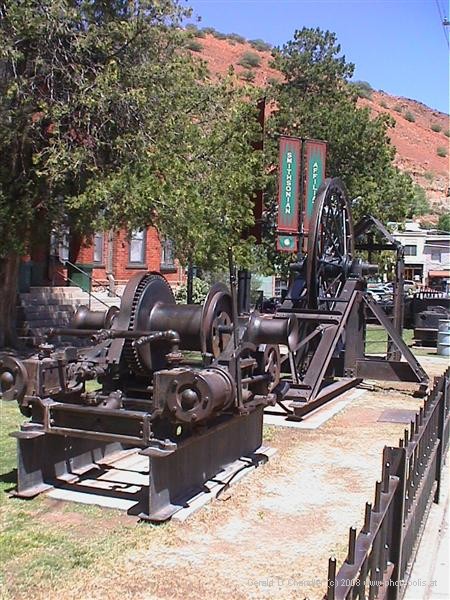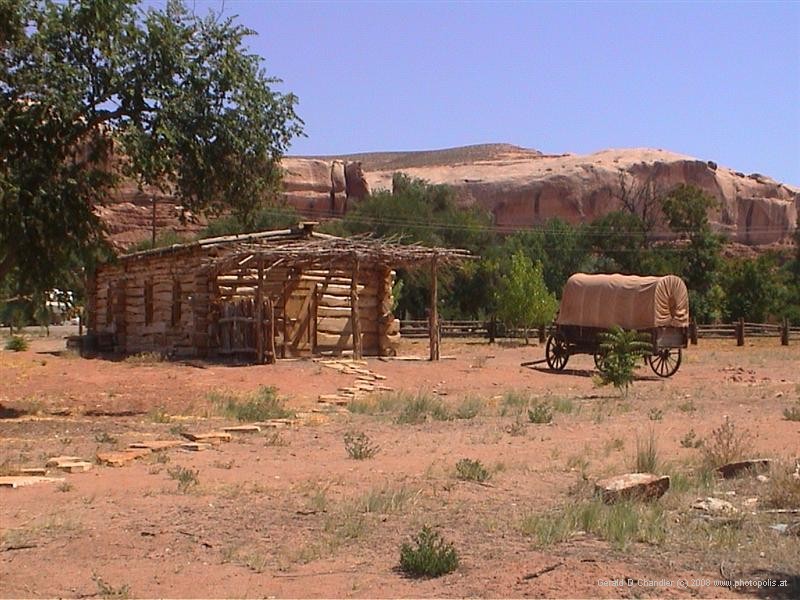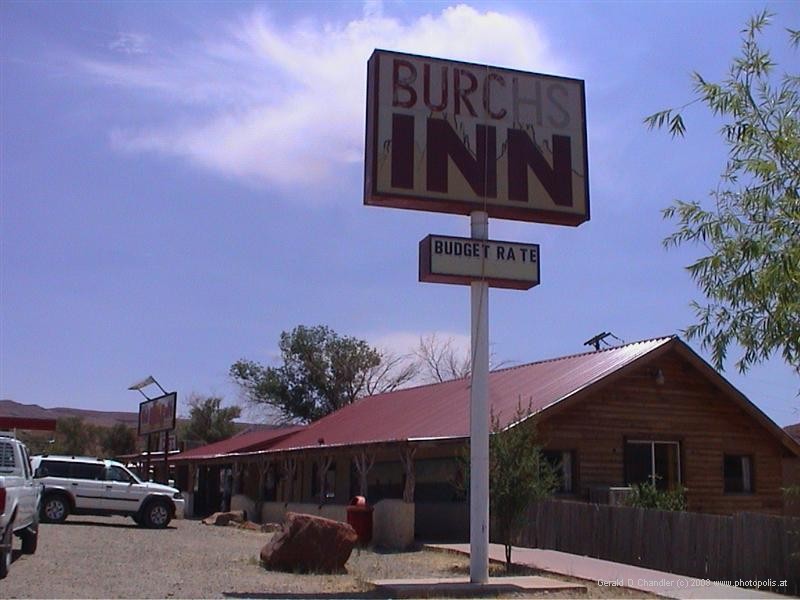Home |Front Page | Index | Blog | New | Contact | Site Map
Arizona | FotoShow | Photos | Map
Allen & Barbara
Heard Museum
Deer Valley
Casa Grande
Yuma
Old Towns
Indian Sites
Mongollon Rim
Petrified Forest
Painted Desert
Canyon de Chelly
Monument Valley
Navajo Monument
Glen Canyon
Grand Canyon
Flagstaff
Wupatki
Montezuma Castle
Oak Creek Canyon
Sedona
Tuzigoot
Tucson
Tubac
Tumacacori
San Xavier Bac
Organ Pipe NM
CactusTrails
Fujitsu Wars

Virginia
North Carolina
South Carolina
Georgia
Florida
Alabama
Mississippi
Louisiana
Texas
Arizona
California
Nevada
Index 1999-2002
Index 2003-2004
Index 2005-2006
Index 2007-2008
Index 2009-2011

Ore Cars |
In our two forays into Arizona, we passed through a number of what can best be described as old Western towns. Some of them, like Bisbee, Tombstone, and Jerome, were mining towns whose mines have closed and been replaced by hotels for tourists who come to see what the old mining life was like. Tombstone is in a class of its own, famous because of the movies made about its gunslinging past. Bluff & Medicine Hat on the contrary are not famous at all, but interesting examples nonetheless of a certain kind of western pioneerism.

Bisbee-Tombstone Area |
Bisbee (May 1)
We arrived in Bisbee just after crossing the border from Agua Prieta, Mexico, to Douglas Arizona. The map shows Bisbee left of center and just north of the border. Also visible in the upper left corner about 25 miles north of Bisbee.
We were actually on our way to Tombstone but saw the signs for the Bisbee Historical Center and drove into town to see what was to be seen. There we learned that Bisbee was founded as a mining town in the late 1800's when Mr Bisbee discovered the Copper Queen mine and Phelps Dodge bought and developed it. Bisbee was incorporated as a city in 1902 and according to Encarta had by that time become the largest city in Arizona, which is not too surprising since the Copper Queen mine is reputed to be the richest mine in Arizona history. At its height, Bisbee had a population of more than 30,000. By 1960, however, the mine was depleted and the town slowly lost population until it developed a small tourism industry and like many other Arizona communities started attracting retirees. The population in 2000 was about 6,000.

Bisbee Museum |

Bisbee Museum |
The main attractions are the old town center which retains much of the charm of an old-style western town, a very nice museum that we sadly didn't have time to do more than peek into that is housed in the former offices of the Phelps Dodge company, an old Post Office that has been restored to serve as the tourist information office, and a huge mining pit that gives testimony to the amount of ore extracted.
Tombstone (May 1)

Tombstone OK Corral |
Tombstone is of course most famous (or infamous) for the gunfight at OK Corral, the story of a fight between the Earp brothers and the Clanton gang. Two movies were made about the event. One, My Darling Clementine starred Henry Fonda as Wyatt Earp, Victor Mature as Doc Holliday, and William Brennan as Old Man Clanton. Directed by John Ford in 1946 it has become a classic. The second, Gunfight at OK Corral made in 1957 and directed by John Stuges starred Burt Lancaster as Wyatt Earp and Kirk Douglas as Doc Holliday.
Tombstone was, like Bisbee and Jerome, originally a mining town, but its mines closed less than 20 years after opening in the 1880's because of flooding. At its height the town had 10,000 inhabitants, which has now shrunk to a mere 1,500. The main attractions here are the old style buildings on the main street with their wooden sidewalks, cowboy paraphernalia, bars, restaurants, and of course the replay several times daily of the famous gunfight. We loved the atmosphere here because even Jan in dismal old Darlington was brought up on cowboy movies and T.V. series. It's a frankly brash tourist trap that is pretty irresistible.
Jerome (June 25)
Jerome is most interesting because of its site, clinging to the side of a mountain a few miles west of Tuzigoot National Monument and 20+ miles west of Sedona. Once a thriving mining community, it is now a reviving ghost town with a small artistic community and a museum that recounts the history of the town and its mines. We cannot speak to the quality of the museum because we arrived after closing, but from the museum parking lot there is a spectacular view of the surrounding area, including the site of Tuzigoot National Monument six or seven miles away on the valley floor. Much less busy and much less prosperous looking than Bisbee, the town itself with its narrow streets is worth a look.
Bluff & Medicine Hat (July 5)
We drove to Bluff, Arizona, because it was there. That is to say, Gerry saw the name on the map, wondered what it was like and so we made a 40 mile detour to take a .lookWe were both a bit surprised by what we found. The town is located in a river valley with the highway bypassing it on one side. There is, however, an old historic fort that commemorates the founding of the town by Mormon pioneers in the 1880's. The fort is not very prepossessing, a sandy courtyard with with one or two wooden buildings that date back to the town's founding, but the interesting point is that the Mormons are still here after all these years as testified to by the large church.

Bluff |

Bluff |
Medicine Hat is even less remarkable than Bluff. It consists largely of a couple of motels and a general store that flank the highway from Bluff to Monument Valley. We learned little about it when there, and couldn't find any mention of it in our encyclopaedias. We mention it here only becasue we loved the name.

Tucson |

Tucson |